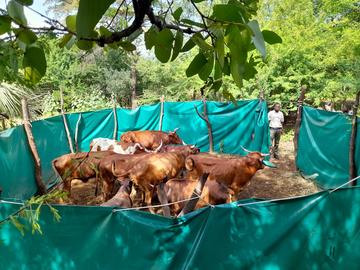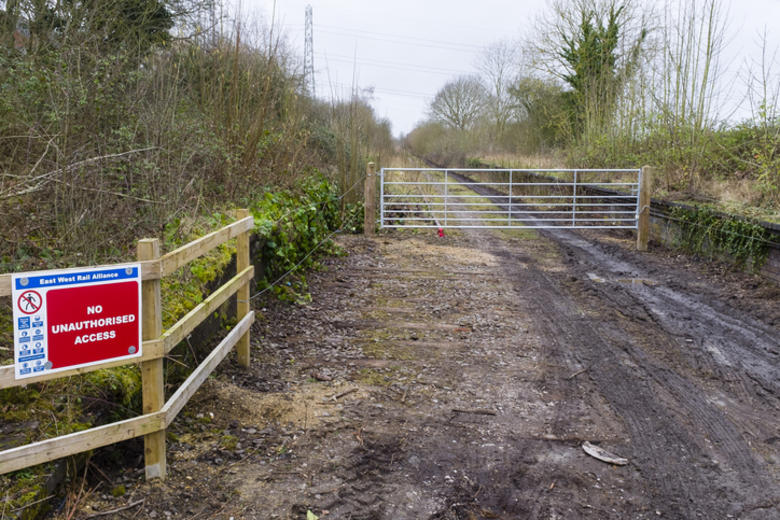MOREANGELS MBIZAH

MOREANGELS MBIZAH
A leading conservation biologist discusses the challenges of lion ecology in Zimbabwe
Published: 4 October 2023
Author: Richard Lofthouse
Share this article
Dr Moreangels Mbizah (LMH, 2012) originally came to Oxford to study the postgraduate diploma in International Wildlife Conservation Practice.
Subsequently her DPhil was partly funded by donations when in the aftermath of the shooting by a trophy hunter of Cecil the Lion in 2015, one of Zimbabwe’s most lionized lions as well as one of Moreangels’ tagged study subjects for her research.
By late-2015 Oxford’s Wildlife Conservation Research Unit (WildCRU) had received a reported $1.06 million in donations by ordinary individuals shocked at what had happened, although to this day the exact relationship between funding, tourism, trophy hunting and conservation remains complex rather than black and white.
Eight years later the world has changed, post-COVID, and QUAD talked to Moreangels to catch up on her agenda.
In the broadest terms the narrative and practice around conservation in Africa is changing. African women leaders are upending the dominance of mostly white, mostly Western, mostly men in conserving their continent's natural landscapes and wildlife.
Moreangels is at the forefront of this change. One of the world’s leading lion ecologists, following Oxford she made the decision to found Wildlife Conservation Action, a conservation organisation in her native Zimbabwe, whose mission is to strengthen the capacity of local communities to mitigate human-wildlife conflict for improved livelihoods and wildlife conservation.
This whole approach is totally different to some approaches to wildlife conservation that may in the past have forgotten or even effaced the very people whose livelihoods depend on the same landscape, whether for farming or herding of livestock.
But there is a balancing love of lions and the other apex predators and wild animals that still populate Matusadona National Park, where Moreangels’ work is focused.
Moreangels says, ‘The first time I saw a lion in the wild it was extraordinary.’
This side of it matters too, lest we swing to the opposite side of a narrative that might only point out poaching and the retaliatory killing of predators by farmers who are suffering from attacks on livestock.
‘It’s not people or animals. It’s both.’
Focusing on the lower Zambezi Valley, ‘a huge landscape’ she reminds us, ‘there is a history of low to no tourism, high levels of poaching and subsistence farming where losing livestock or crops, with occasional attacks on humans resulting in severe injury, means that preserving wildlife is ‘high cost, low benefit.’
Moreangels has sought not just to educate communities but to implement and teach farming mitigation measures that are also culturally relevant. These have included crushing chili peppers, mixing them into a paste with oil and either smearing it onto farm perimeter fences or mixing into dung bricks that can then smoulder, emitting a smoke that elephants tend to stay away from. The result has been a vast decrease in crop losses from crop raiding elephants and other herbivores.
She adds, ‘…chilis are easy to grow. In fact we have seen a separate market spring up in chili peppers.’

Another big development has been the provision of mobile boma, effectively tall wooden stakes with tarpaulins hanging off them, to create a predator proof enclosure for cattle at night. In most circumstances it is enough to put off lions who might otherwise attack a herd of cattle left in the open.
Raising awareness is the other large factor, which has involved trained villagers attending farmer/wildlife conflicts as ‘first responders’ to try and decode what happened and why, and to prevent repeats by implementing mitigation measures.
She says that Wildlife Conservation Action has so far trained over one thousand farmers.
Other mitigation methods that Moreangels is considering includes bee hive positioning within farms, both as a new source of revenue and an elephant deterrent method. Other methods being currently used include the revival of the old idea of a kraal made of thorns, which is predator proof.
Moreangels founded Wildlife Conservation Action in 2019. It now has over thirty staff and is funded partly from US sources including USAID, the Tusk Trust, the World Wildlife Fund, African Wildlife Foundation, Dry Creek Foundation and the Wildlife Conservation Network through the Lion Recovery Fund.
It is by no means all good news, seen more broadly. Moreangels says that wild lion populations are in ‘rapid decline’ in West and Central Africa, adding that where there is political unrest it tends to result in human precarity and an immediate rise in illegal poaching. She mentions Nigeria, Niger and Burkina Faso in this regard.
In some parts of Southern Africa lion populations have risen 10-12% over the past two decades.
Where farmers are being bitten by climate change it is making their lives harder, while the resilience and sustainability of all ecosystems is under threat.
But the most positive change is a profound one that still needs to find full expression.
Western/Northern power structures are beginning to realise that it’s only when solutions to the threats facing nature come from Africans, that they stand any chance of working.
Such an approach means putting people and especially women at their centre, which is also a challenge to the societies in those countries where women are severely under-represented in science, and science is severely under represented more generally.
The World Economic Forum has noted that Africa has about 1/8th of the scientists of the developed West, of whom fewer than 30% are women.
Lead image: Dr Mbizah observing a lion pride. Credit: Gabby Salazar. Second image: Dr Mbizah delivering a TEDTalk, with Cecil the Lion in the background. Credit: Ryan Lash. Third image: Mobile boma with cattle inside. Credit: M. Mbizah.
Moreangels’ research began in 2009 during her Masters research project at University of Zimbabwe with the Lowveld Wild Dog Project (LWDP) in South-East Lowveld, Zimbabwe. ‘My study looked at the diet and overlap in diet of four large carnivores (African wild dog, Lion, Hyena and Leopard) and the implications for the conservation of the African wild dog.’ She then joined Oxford University’s WildCRU in 2012 as a Postgraduate Diploma student, with several stints of theory and practice ensuing, and joining the Hwange Lion Project.
The focus of her Oxford doctoral thesis (2013-18) was to assess the effect of resource abundance and distribution, on the ecology and social behaviour of social animals using the example of a social large carnivore, the African lion. ‘I carried out my study in Hwange National Park, which is a semi-arid landscape where resources are heterogeneously distributed in both space, and time and this permits us to perform natural experiments on the effects of resource distributions. As the apex predator in African savannah ecosystems, understanding how the abundance and dispersion of resources influences lion ecology and social behaviour is important for management and conservation actions.’
Moreangels’ lion work in Hwange National Park, was in 2018 featured in a National Geographic short film, ‘One Woman’s Remarkable Journey to Protect Lion’. In 2019 Moreangels was awarded a prestigious TED Fellowship and she gave a TED talk ‘How community led conservation can save wildlife’ at the TED Conference in April 2019 in Vancouver, Canada. She has published widely as a research ecologist.















